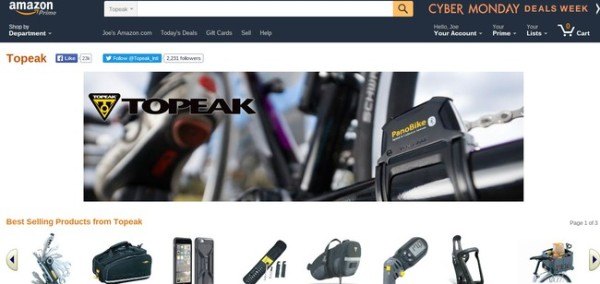Ah yes, the end of 2015 is approaching and so is the speculation about what the ecommerce world has in-store for us in the future.
As with just about every industry, trends change (see our 2015 trends roundup!), making it necessary to catch up and follow along in order to keep your business relevant. Heck, ten years ago social selling and digital receipt upsells were far less common if not impossible.
As the 2016 year comes barreling towards us, it's essential to look back at what you'e done with your business in order to establish a plan for the unexpected ahead. Even evaluating your entire ecommerce system is a wise choice, considering companies change, prices go up and offerings are not always what they once were.
Yes, the new year is a time for reevaluation, and the ecommerce world is no stranger to that. Therefore, keep reading to learn about the ten most interesting ecommerce trends for 2016 and beyond.
1. Multi-Channel Shopping May Make or Break Your Business

As a consumer, almost every time you find a cool product online, chances are you can also go to Amazon and find it on there. This is what many consider multi-channel selling, since it strays from the regular sales website and offers products through a multi-merchant system.
The reason so many consumer go to these multi-vendor websites is because they can find a wide selection of unique items from varying sellers. The cool part is that they only need to make a single payment at the end. Many ecommerce sellers know the benefits of selling through multiple channels, but the need is ever growing. Companies are starting to experience problems if they don't list products on places like Amazon, Etsy or ThemeForest.
2. Connecting with Customers Through Social Media is Not Enough
In the past, social media was primarily to connect with customers and get them to like or comment on your content. This stirred up buzz whenever you launched a new product, and it would even send people to your product or blog pages when linked.
Now the social ecommerce landscape is changing, considering so many of the social networks have opened up their systems for selling. For example, both Pinterest and Twitter have announced buttons that companies can use to post and sell their items directly through the social networks. The same goes for Facebook. In fact, some platforms like Shopify and Bigcommerce have Facebook selling built-in.
3. An Integration of Online and Offline with Beacon Technology
Offline and online technologies are coming together more than ever, and with the advent of something called beacon technology, companies are beginning to offer mobile deals and greetings when someone walks into the store. The technology works when your phone or tablet keeps searching for a beacon. Physical stores can implement physical beacons in the shops, so once someone walks in, their phone accepts the signal and provides something like a promotion.
4. The Popup Makes an Effective Comeback
Remember when the internet popup was in full force? Consumers hated the popup.
Well, it's making a huge comeback, and if you've been on the internet at all in the past six to twelve months, you've noticed.
However, there are quite a few differences from the pesky popup ads we used to see. First of all, the new popups are generally only to give away something for free in exchange for email addresses. The new popups generally never come back, or come back rarely, when the customer has signed up for the email list.
These popups work wonders for email marketing and they don't have the stink that the old, deceptive popup ads use to have.
5. Huge Images and Videos Deliver Stunning Homepages

As 2015 progressed, many ecommerce designers started putting a focus on large images and videos, many of which would take up the entire screen.
These designs have delivered beautiful introductions for companies, since ecommerce businesses can quickly explain the purpose of the site in a few minute video, or a stunning image.
Huge media modules also help out the consumer, since most of the clutter is pushed to secondary pages, resulting in one or two paths for the customers to go. It's all much simpler.
6. Virtual Sales Forces Become Highly Implemented
In the past, online support teams mainly sat around to wait for a customer to send in a question. This often resulted after the buy, or to inquire about some specs before buying.
A huge shift is coming in the ecommerce industry, since many companies are beginning to treat online employees like they would brick and mortar sales people. Instead of waiting for customers to buy, ecommerce sites are using popups, chat modules and other tools for sales people to convince customers to buy before they make a decision.
7. Mobile is Not Recommended, But Required for Survival
The mobile buying numbers are gradually moving up every quarter. If you haven't modified your ecommerce site to make it mobile friendly, you're running out of time to remain competitive.
8. Online Loyalty Programs Continue to Grow
The online loyalty program hasn't seen as much growth as other marketing techniques, but as the technology improves, and credit card companies begin to get involved (you may have noticed the Amazon Rewards credit card,) the online loyalty program is sure to improve.
9. Niche Flash Sales See an Explosion

Groupon is still hanging around, but the most success with flash sales has come from ecommerce sites that don't generally have these sales. The point is to run flash sales for your regular customers. If, say, 1,000 people are browsing on your site, you have a large chance of selling out of a product if you offer them a flash sale popup. The urgency is often too much to pass up.
10. Real Time Analytics Become the Norm
Analytics use to come in play towards the end of the month, where higher ups in the company would sit down and try to figure out what aspects of the site were hurting business.
As 2016 comes closer, we're starting to see more advanced real time analytics, so you can see how customers react while on the site, improving how you make decisions on the spot.
In Conclusion
The world of ecommerce is always changing, so make sure you bookmark the most interesting ecommerce trends for 2016 and beyond. It just might save you some cash or push your online business to the next level. Feel free to leave us a comment in the section below if you have any other suggestions about upcoming trends.
Feature image curtsey of Gustavo Zambelli








Extremely helpful. I’m sure, even if you used one or two of these tips you’d go quite far these days.
Thank you
Absolutely brilliant and helpful article !!! Very informative post. Thanks
Tara, Ecbilla
I will need more trends of this news. Thanks for ones you have been sending its really helpful..
Here is my question I am running an online cosmetics store which I do not have an offline store where people can come and buy..the aim of the online store is create a huge sales so I get a ln offline store for the business to grow more..i recently find out that customer will want to know if you have a physical store do they trusting what they are buying . How can I make my customer trust me and am shop at my store without having doubts..please your response will go a long way.thanks